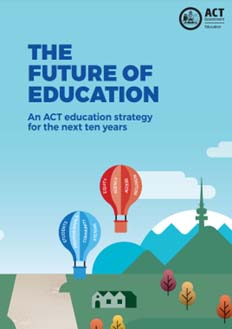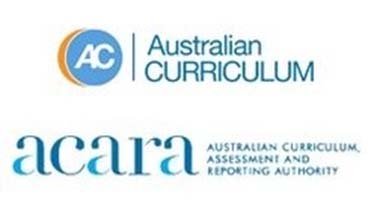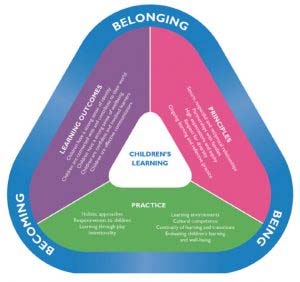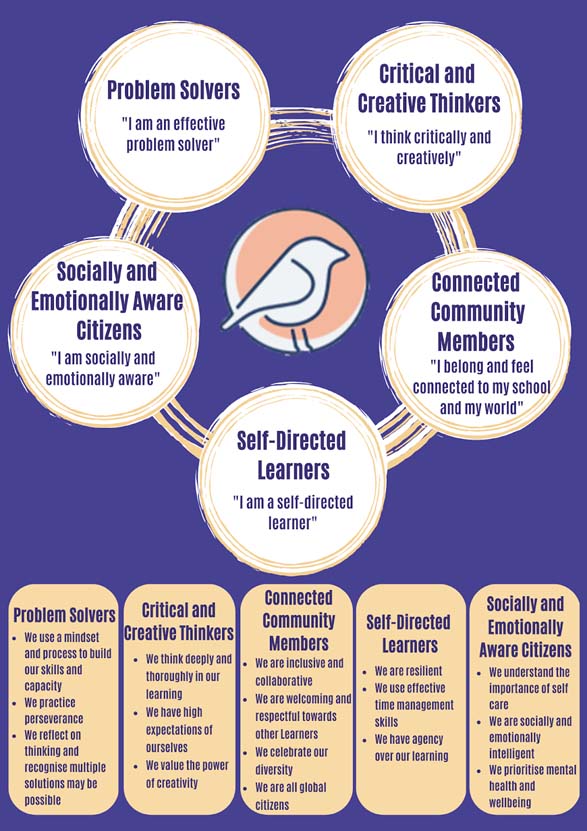Contemporary Learning at ESS
At Evelyn Scott School, we are confident that we are delivering a high quality, academically rigorous education to your children. For many years, many people in the media have shared their opinions about education and some of these are not founded in research or best practice. There is also a national debate surrounding education; whether we should go 'back to basics' or should we keep pace with current research and deliver an education that gives our children skills and knowledge for their futures.

At Evelyn Scott School, we provide more than just the basics. Every single profession, including teaching, must keep pace and do the best they can for the people they serve. Everything that we do at Evelyn Scott School is based on international, national and local strategic frameworks and current research. Contemporary learning is defined as good quality education that builds all of the foundational literacy and numeracy skills and also goes beyond these basic skills because we know that our children deserve the best and they need to be prepared for their futures.
We aim to address some of the myths that surround contemporary learning in Australia. We hope that our school community find this information useful.
Myth: “Less challenging/academically rigorous than traditional schooling”

1. All ACT public schools follow the ACT Future of Education Strategy. At ESS, our learning model is part inquiry, part student-led and part direct teaching. ALL of it utilises the Australian Curriculum and ALL of it is based on the ACT Future of Education Strategy. At ESS, we highly value contemporary, personalised learning. This might look a little different to the education process that previous generations experienced, however international, national and local government frameworks and policies, based on current research, informs us that the traditional ‘rote learning, read, remember and regurgitate’ models do not serve our children and young people.
2. International (THE FUTURE OF EDUCATION AND SKILLS Education 2030), National (The Alice Springs (Mparntwe) Education Declaration - Department of Education, Australian Government, and Local The ACT Future of Education Strategy ,directives provide the authorising environment for our school's vision and our daily work.
3. We place the student at the centre of their learning and take their interests, fascinations and curiosities into consideration when co-designing their learning. Students new to this approach may take a little while to get used to it, because they are not ‘spoon fed’ information or not always copying notes from the board or always working through textbooks at the same pace. It may be quite challenging for students to understand the process in the beginning, however, once this period of adjustment is over, students typically report that they learn and retain much more and are challenged academically.
4. Teachers co-design learning plans with their students, starting with the student’s interests. They craft an Essential Question or a purpose to the project and then identify tasks or footsteps that will help the student take a deep dive into their project. These tasks will be challenging and cover a range of disciplines. Teachers then support students to explore the Achievement Standards within the Australian Curriculum. At Evelyn Scott School, we call Achievement Standards Learning Intentions. Teachers will show students how to unpack these Learning Intentions, thereby creating academically rigorous, interdisciplinary and engaging learning for the student.

Myth: “Watered down curriculum”
1. Learners at ESS access core elements of the curriculum and all teaching staff utilise the Australian Curriculum because we are an ACT public school. All ACT public schools utilise the Australian National Curriculum. Within this curriculum, each discipline has a set of Achievement Standards and, at Evelyn Scott School, we call these Learning Intentions. Teachers are trained onsite to purposefully plan units of work and also how to use Learning Intentions effectively.
2. The Australian Curriculum is the foundation of our planning. Teachers support young people to unpack the relevant Learning Intentions, and in this way, ensures that their learning is not ‘secret teacher business’ and also fosters important future skills like problem solving and self-direction. An interdisciplinary approach means that we can address many more Learning Intentions than other ‘one size fits all’ teaching and learning models. Our Project Planner design ensures that both teachers and students have the National Curriculum at the forefront of their planning.
3. We are working directly with our colleagues in the Education Directorate's Curriculum Team. This team approves our work and have been very supportive of our academically rigorous learning design.
4. When a Learning Intention doesn’t fit within a project or hasn’t been addressed in class, teachers will come together and form focus groups we call Master Classes where they will specifically address these individual Learning Intentions. This is where teachers will take on a more interventionist role and employ explicit teaching and learning. Thereby, ensuring that ALL elements of the curriculum are addressed comprehensively. Contemporary learning is all about high quality teaching and learning and utilises a sophisticated range of pedagogies. Here is an example of a high school student’s timetable. All core elements of the curriculum are covered>

5. Additionally, contemporary learning is about getting students to see that the curriculum is connected. This is why we have seen national movements to combine disciplines such as STEAMD (Science, Technology, Engineering, Maths and Design Technology). It is almost impossible to separate subjects because there are connected threads across and throughout every discipline. Can you think of one subject that isn’t somehow related to another? Compartmentalising the curriculum is an outdated concept which leads to busy work and confusion for our children. Integrated studies makes meaningful connections for children and young people.

6. The Preschool utilises the Early Years Learning Framework (EYLF) in order to plan their lessons and units of work, all based around our Global Concepts and children's interests, fascinations and curiosities.

Myth: “Inquiry is only for primary school”
1. Contemporary learning is for ALL children and young people from Preschool right through to Year 12 and beyond. ACT Colleges utilise contemporary learning and have been offering integrated studies courses for a number of years. More info and research here> Integrated Studies
2. Adolescents learn 21st Century skills such as self-direction, collaboration and problem solving as part of the contemporary learning model. Students who are challenged through contemporary learning models are likely to perform better at university and further study because they are able to utilise these important skills and have built their own sense of academic resilience as a result. Research, such as this significant work from OECD, explains how student agency is a valuable asset for all of our children as they navigate their futures > THE FUTURE OF EDUCATION AND SKILLS Education 2030 Employers frequently identify that they require employees who know how to take initiative, collaborate and communicate effectively and solve problems efficiently. We teach these skills explicitly and then provide opportunities to apply these important skills.
3. At Evelyn Scott School, we value and promote lifelong learning and so we have established a strong Future Focused Learning Continuum. This Continuum begins with play-based learning in the preschool, moves to inquiry-based learning in the primary school and project-based learning in the high school. In this way, we have created the building blocks for contemporary learning and when a child reaches high school, they will already have some incredibly useful skills and understanding in their toolkits.

Myth: "Only one teaching method"
1. At ESS and other ACT public schools, teachers utilise a diverse range of pedagogies (teaching method) to engage learners; direct instruction, more structured learning, questioning and feedback, collaborative learning are a part of this suite of contemporary pedagogies. These teaching styles combined with high quality contemporary learning is proven to be highly effective.
2. A diverse range of teaching methods are required to engage all learners and movement throughout the school gives student different perspectives and different teachers and teams of their peers to work with. Students at ESS move to different parts of the building throughout the school day to access different parts of the curriculum (electives). For example students in the Senior Campus attend Movement in the Gym and outdoor learning spaces and Science, Art, Woodwork in our STEAMD space.
3. Here is a copy of our Graduate Profile. This is a visual of all of the skills and attributes we are explicitly working on with your children as they progress through our school. These skills and processes will be taught explicitly and then applied to learning activities. This is another way we build engagement and agency.

Myth: “No tests, no homework, no core classes”
1. Contemporary learning might look a little different nowadays but there are still so many things that will be very familiar to families and students. Inquiry based learning is just ONE component within contemporary learning.
2. Tests such as NAPLAN, BASE and PAT are an educational requirement for all schools and are conducted periodically throughout the school year. Tests, surveys etc may be utilised during class time to check for student understanding but it is not the only way that we can do this. We utilise formative assessment which is 'assessment along the way' rather than focusing all of the attention on summative assessment or the test itself. Our ACT College system also utilises this form of formative assessment in order to generate ATARs.
3. Home Learning may consist of catching up or reviewing the work that was completed throughout the day, working on reflections in their study journals and/or completing tasks. Each young person should have a quiet study space set up in their homes with a desk and a chair. Reading for pleasure is also a daily practice that each young person should be actively involved in. If your child is having trouble finding books they like, encourage them to visit our library where we can help. These sorts of study skills will be helpful to all children and young people as they navigate their way through their schooling, further study and/or employment.
4. All of the core elements of the curriculum (Maths, English, Science etc) are delivered and the Learning Intentions are addressed and will be reported on for each student. We deliver Master Classes that focus on particular Learning Intentions as required and teachers plan purposefully. Teachers unpack the Learning Intentions WITH learners so that they arrive at mutually determined outcomes. In this way, we teach students this important process and combine interest with rigour. The difference is that we spend the time to explain the process to students and they gain some agency over their learning.
